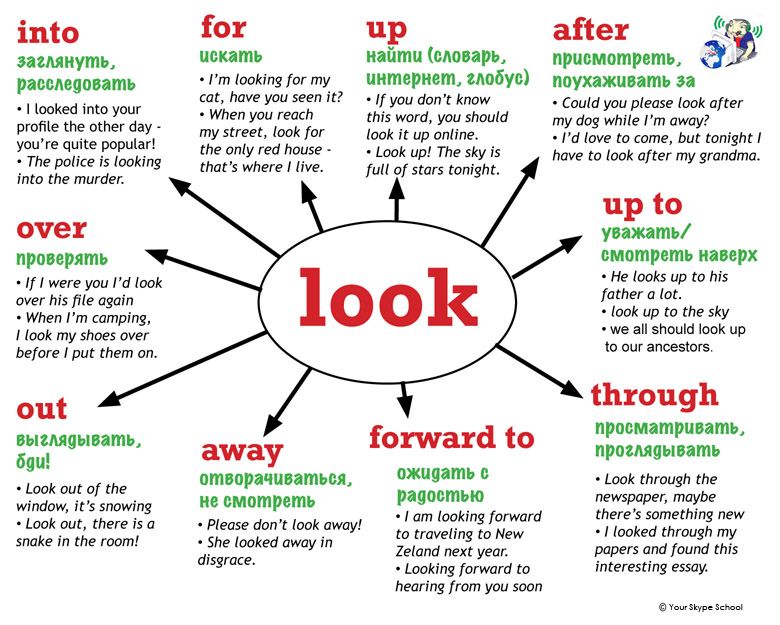Ask a question, get an answer ASAP!
GET A QUOTE
Spare Tire Installation Cost
Service Location
Price range for all vehicles
You made it! You got your punctured tire repaired before it became damaged any further. The technician fixed it, filled it, and now you’re on your way. Then a thought clouds your mood over. How long are you able to drive with your tire like this? Is it safe to drive your car on a patched tire?
There are three common ways to repair a tire:
A patch over the puncture hole on the inside of the tire
A plug through the puncture hole
A combination patch-plug that covers the puncture from the inside and plugs through it
The only proper repair is a combination patch-plug. A patch or a plug on their own are temporary repairs at best and the tire should either be repaired properly as soon as possible, or replaced.
A proper repair job with a plug-patch results in a tire able to hold air indefinitely -- that is, unless you get another puncture. It is safe to drive your vehicle like this as long as the tire’s useful life. The one consideration is that tire manufacturers no longer support their speed rating on a repaired tire, so taking your high performance car to a track day on a repaired tire is probably not a good idea.
As a rule, most shops will not patch one tire more than three times. If the proper repair for a puncture overlaps with another repair, or if the tire has already been repaired three times, you will need to replace your tire.
The most popular service booked by readers of this article is Spare Tire Installation. YourMechanic’s technicians bring the dealership to you by performing this job at your home or office 7-days a week between 7AM-9PM. We currently cover over 2,000 cities and have 100k+ 5-star reviews. .. LEARN MORE
.. LEARN MORE
SEE PRICING & SCHEDULING
The statements expressed above are only for informational purposes and should be independently verified. Please see our terms of service for more details
4.2 Average Rating
Service Hours
7 AM - 9 PM
7 days a week
Phone Number
1 (855) 347-2779
Phone Hours
Mon - Fri / 6 AM - 5 PM PST
Sat - Sun / 7 AM - 4 PM PST
Address
We come to you at no extra charge
Guarantee
12-month/12,000-mile warranty
Our certified mobile mechanics perform over 600 services, including diagnostics, brakes, oil changes, scheduled mileage maintenances, and will come to you with all necessary parts and tools.
Get a fair & transparent quote instantly before booking.
SEE REVIEWS NEAR ME
11 years of experience
585 reviews
Request Nicholas
Nicholas
11 years of experience
Request Nicholas
by Gloria
Toyota Camry V6-3. 0L - Spare Tire Installation - Knightdale, North Carolina
0L - Spare Tire Installation - Knightdale, North Carolina
Nicholas finished an earlier appointment which enabled him to come by earlier than originally scheduled. I'm very grateful he chose to reschedule. While replacing a flat with my donut spare, he instructed me on how to safely drive to the tire shop for the repair. More importantly to have the shop add air to the donut spare. Nicholas did an excellent job. He as very professional. Thank you
by Jairus
Ford E-150 Econoline - Spare Tire Installation - Durham, North Carolina
I was VERY pleased with Nicholas' expertise and was more than delighted that he was so prompt. He was very polite and friendly, and he did a marvelous job. If I ever need any repairs to my vehicle in the future, I would definitely ask for Nicholas.
29 years of experience
91 reviews
Request Luis
Luis
29 years of experience
Request Luis
by Saravana
Toyota Prius L4-1.5L Hybrid - Spare Tire Installation - Prospect Heights, Illinois
Luis attended my car today and help in fixing the issue quickly. He is nice and friendly guy. I will recommend him for any services.
He is nice and friendly guy. I will recommend him for any services.
11 years of experience
106 reviews
Request Hugh
Hugh
11 years of experience
Request Hugh
by Laura
Toyota FJ Cruiser V6-4.0L - Spare Tire Installation - Castle Rock, Colorado
Hugh came to change out a flat tire for my spare today. I have to say that I feel sheepish for calling someone to come help because I know how to change a tire but I was at work and on shift until 2 am and he came to my place of work. Instead of just installing my spare, he took the time to evaluate the situation. I had a nail in my tire and he took the tire to get patched and my vehicle drove better on my way home than when I left this morning. It was snowing sideways when he showed up to help me. He was a bit of a godsend in the moment and I would recommend him to anyone. I was just distressed because I did not have enough tip to give this guy for overachieving when I needed it. Huge five star review. I only hope to pay his generosity forward. He was more than worth the cost and he did a phenomenal job.
Huge five star review. I only hope to pay his generosity forward. He was more than worth the cost and he did a phenomenal job.
26 years of experience
88 reviews
Request Jonathan
Jonathan
26 years of experience
Request Jonathan
by Adam
Honda Civic L4-1.7L - Spare Tire Installation - Smyrna, Georgia
Jonathan was very punctual, friendly, and transparent. He clearly explained everything he did and provided detail about any additional work he recommended. Great work!
Our certified mobile mechanics make house calls in over 2,000 U.S. cities. Fast, free online quotes for your car repair.
GET A QUOTE
GET A QUOTE
5 Signs Your Car Needs An Alignment
Vehicle pull, loose steering, abnormal tire wear, and an off-center or not returning to center steering wheel are all signs you need an alignment.
What are the Best Car Tire Brands to Buy?
Car tires come as all season passenger tires, summer passenger tires, on-road light duty truck and SUV tires, and off-road truck and SUV tires.
How to Rotate Car Tires
Car tire rotation reduces blowouts and other tire-related car accidents. Tires should be rotated every 5k-6k miles or at every other oil change.
Tires easily go flat when hit curbs at slow speed
The angle at which the impact occurs is more important than the speed at which the impact occurs. The tire will lose air if the angle of the impact shifts the tire off of the rim bead. Another possible cause...
tire pressure
Hi there: This is a fantastic question and one that should be asked by more car owners. Tire pressure recommendations (https://www.yourmechanic.com/article/what-does-tire-pressure-mean) should always be followed by the vehicle manufacturer. On the inside of your driver door is typically a white...
On the inside of your driver door is typically a white...
Vibration at 55mph
You will need to advise of the tire sizes you are using, since if you have oversize tires then your speedometer is not accurate and you may be doing faster speeds than what is on the speedometer and your engine...
Services
Cities
Maintenance
Our service team is available 7 days a week, Monday - Friday from 6 AM to 5 PM PST, Saturday - Sunday 7 AM - 4 PM PST.
1 (855) 347-2779 · [email protected]
Read FAQ
GET A QUOTE
A tire patch is a safe and reliable way to repair a leaky or flat tire to avoid the expense of replacing the tire, but how many patches can a tire have?
A tire can safely have multiple patches depending on where the tire is punctured. Any two punctures should be at least 16 inches apart, and generally speaking, you should only patch a tire twice; however, you should take a tire to a tire professional to confirm.
Today, we'll teach you about the risks of patching a tire too often, how long these patches last, and when you should avoid a patch.
Keep reading as we cover the above topics and share details.
Table Of Contents [show]
A mechanic applying a tire patch.
A properly patched puncture won't lessen a tire's lifespan.
Theoretically, you could patch the same tire as many times as you like as long as any two punctures aren't less than 16 inches apart.
That said, after the 2nd or 3rd patch, many tire repair centers refuse to make the repair and will instead suggest a new tire.
In any case, it's best to have a professional tire specialist look at your tire and take their advice.
Tires that have been properly patched more than once aren't inherently more unsafe than tires that have only been patched once.
That said, tires that have been improperly patched, regardless of how many times, have many risks.
An improperly patched tire will leak, which could lead to the following:
Tire patches can be incredibly reliable if installed correctly and will last the tire's lifetime.
It all depends on how well you maintain your vehicle and its tires/wheels, including:
A patch can also be affected by everyday things we encounter driving, including road hazards, nails, potholes, etc.
Patched tires are safe; after all, even tire repair centers and mechanics will do the patch repair willingly.
And when it comes to a safe option that doesn't require dropping a few hundred bucks on a new tire, this is the best choice.
It's especially safe compared to driving on a leaky or flat tire, and you can even count on them in most driving conditions.
Of course, road hazards can compromise the safety of a patched tire if the patch job isn't done correctly.
However, having a professional tire specialist patch your tire is worth it since the job is relatively affordable (about $15-$30 ).
An improperly patched tire can blowout.Patching a tire will not inherently weaken it, but an improperly patched one will be weak and inevitably start to leak.
A tire's sidewall should never be patched. Due to stresses on the sidewall, a patched sidewall will not hold and could lead to a dangerous situation.
Depending on what part of the tire you're patching, it could become weaker or more damaged after being patched.
The vehicle speed rating is the main thing a tire compromises with a good patch. After even the most successful patch, a tire isn't recommended for high-speed use (more than 80-85 mph).
Fortunately, patches are reliable even on highway roads, although their price tags may indicate otherwise.
While a patch may lower the speed rating of your car, you can still drive at somewhat high speeds (70-75 mph), which is the limit on most highways.
Just make sure not to exceed the limit, especially if the road is particularly bumpy or hazardous.
While tire patches are incredibly helpful, there are some scenarios where they just can't be used.
Holes or punctures that are:
Some people will attempt to patch and repair tires with holes larger than ¼ inch at home.
Unfortunately, tires are not built to handle this kind of repair, and you risk a blowout or, worse, driving in those conditions.
Punctured sidewalls cannot be patched.As previously mentioned, you shouldn't be patching the same hole more than once or twice in the tire's lifespan.
And when it comes to multiple different holes, you should limit those patch repairs to just two maximum.
You can still use two patches if the two holes are more than 16 inches apart.
The problem is that this is more often than not simply not the case, and you'll end up needing to get the tire replaced.
Patching a tire puncture is a safe and useful way to give a temporary fix to a tire problem. But how many patches can a tire have?
Generally, you shouldn't patch the same tire puncture more than twice and shouldn't patch more than two holes in a tire (especially if they're close together).
That said, take your tire to the tire shop and get a final decision from a professional before throwing away a tire with more than two punctures.
Anyone who has not pierced a wheel has not ridden a motorcycle or any other two-wheeled vehicle. Punctures are not uncommon, they come from external influences like a nail, self-tapping screw and other sharp objects. It is also not uncommon for owners to save on buying a rim tape that protects the camera from direct contact with the sharp edges of the spokes. More rare are cases of breakdown on the rim, this happens when the wheel hits something sharply - a stone, a curb, etc., and if the wheel does not bend from this, then the chamber will pierce for sure. nine0003
In general, firstly, it is not always possible to buy and change a camera instantly, thereby losing either a whole weekend or getting up in the middle of a ride. And in principle, why immediately buy a new camera, if the damaged area can be sealed and travel for an unmeasured amount of time.
But in order for the patch to really hold on and not fall off, a lot of preparatory work is needed. You need to start preparing by determining the puncture site. To do this, we inflate the tire and look for this place. Finding it is not difficult, it will be, frankly, audible. nine0003
Then we take sandpaper (grit 80, coarse is shorter) and clean well the place where the patch will be applied.
It is necessary to remove all the bumps and seams of the chamber to get a perfectly flat surface.
As a patch, it is best to use the patch from the purchased tube tire repair kit, since it is not expensive, and the patches really hold.
We select a patch according to the size of the hole in the chamber and its location. Large ones are rarely required, for example, if the camera is worn for some reason. nine0003
nine0003
The chamber must be completely lowered by turning the spool completely out, otherwise you will not glue anything, because the air under pressure will constantly come out, preventing the adhesive base from seizing firmly. Before the camera is lowered, it is better to mark the puncture site with a marker so that you do not look later and do not make a mistake.
But more to the point, we lubricate the surface of the camera, a little more than the surface of the patch you have chosen: it is better to have a supply of glue base than to have an unglued place where there will be an air breakthrough. nine0003
Let the glue dry for approx. 7-10 minutes, the time depends on temperature and air humidity. For example, at home, at a temperature of about 25 degrees, the glue began to dry for about 3 minutes already. After the glue has dried, we apply a patch and press it tightly, press everything carefully and pointwise to force out all the remaining air between the patch and the adhesive base.
After that it would be even better to press the patch. From the simplest, for example, put the camera between two boards and clamp it in a vice, or at worst put some piece of iron on the top board. nine0003
The final result should be such a patch that will hold no worse than a new camera.
Do not rush after everything is glued, put the camera, let the glue dry normally, be patient at least 3 hours, to be sure, and not disassemble the wheel a thousand times.
There is not always a way to call a tow truck, and driving on a flat tire, “chewing” the rubber and killing the rim is at least uncomfortable. nine0003
The very first replacement of rubber on a motorcycle or scooter gives reason to think - what is better in terms of quick repairs: tubeless ones that do not require wheel disassembly to eliminate a puncture, but leave the rider helpless if, along with damage, it “led” and flattened the edge of the disc? Or chambers - allowing sealing almost ring breaks (if only there were enough patches), but requiring the removal of rubber from the rim for this? The unequivocal answer is no. Few classics, straights or tourers today remain "loyal" to tube rubber models: tubeless tires are lighter, softer, warm up and cool down faster thanks to simplified heat transfer. In sports, more precisely - enduro and motocross, chamber - on the contrary, prevail: only spoked wheels can "play", withstanding strong alternating loads during landings and impacts. nine0003
Few classics, straights or tourers today remain "loyal" to tube rubber models: tubeless tires are lighter, softer, warm up and cool down faster thanks to simplified heat transfer. In sports, more precisely - enduro and motocross, chamber - on the contrary, prevail: only spoked wheels can "play", withstanding strong alternating loads during landings and impacts. nine0003
The nuance is that a tire with a chamber can be put on any spoked or cast disc, and a tubeless one can only be placed on a cast one, because only it can ensure tightness. Tube – can be installed in a tubeless tire as an emergency measure. In case of major damage to the sidewall, cracks or curvature of the edges of the rim, this will make it possible, after pumping up the wheel, to reach the nearest tire service (and there already - straightening, balancing and other maintenance according to the rules). True, for such a focus, it is advisable to take a camera with a face value one less than the diameter of the disk, otherwise it will create folds inside that will rub for a couple of hundred kilometers. The resource of such a “treatment” is large - until the next puncture, like a new one. nine0003
The resource of such a “treatment” is large - until the next puncture, like a new one. nine0003
It depends on the magnitude of the damage whether it will be possible to eliminate it on your own, or whether you will have to “surrender” to the motorized tow truck. In tubeless - holes up to 5–6 mm are patched, in chambers - as much as there is enough glue and patches, the main thing is the condition of the tire. To determine the extent of the disaster - find a place where you can safely stop without violating traffic rules (where it is prohibited - you will have to sacrifice tires and drive on). nine0003
If the wheel deflates slowly, and the object that pierced it is still inside, you can try to carefully drive to the tire shop. A completely deflated "pancake" will have to be resuscitated on the spot, or - remove the wheel and take it to the service.
To find a hole in a tubeless tire, if it is very thin and not immediately visible, the wheel must be pumped up, slowly pouring water - bubbles will go. In place, tubeless tubes can be “harnessed”, or filled with sealant inside, without removing from the motorcycle. nine0003
In place, tubeless tubes can be “harnessed”, or filled with sealant inside, without removing from the motorcycle. nine0003
With the second type of tires - more difficult. A torn balloon must be removed from the tire to detect a defect and seal. In a good way, the wheel must be removed from the motorcycle and disassembled on a clean, flat, hard base. Suppose such a “patch” can be provided even off-road, but how to remove the wheel on a motorcycle if it does not have a central stand? And shooting is not required. The motor must be carefully laid on its side, after making sure that the faucet is closed, gasoline does not flow out through the tank cap (antifreeze does not flow from the tank if the motor is “dropsy”), and removing the plastic or wardrobe trunk with fragile contents (if any). nine0003
You will have to unscrew the wheel from the motorcycle only if you need to replace the tire, or it is decided to patch the tubeless tube with a “fungus”. In the absence of a central stand, this will also have to be done on a lying bike, or - make this stand from improvised materials (bricks, stump, car jack), placing them under the crankcase protection from below, the central tube of the frame, the duplex jumper (but not under the plastic, itself engine crankcase or attachments!), under both footrests - if they are not folding, or - under the pendulum. Before removing the rear wheel on a motorcycle, the front fork must be loaded with something, or an even higher lining is made. nine0003
Before removing the rear wheel on a motorcycle, the front fork must be loaded with something, or an even higher lining is made. nine0003
In a motorcycle tire fitting shop, tubeless tubes are repaired by cold vulcanization. They are removed, disassembled, the puncture site is cleaned from the inside, degreased, lubricated with glue and a calibrated “fungus” patch is inserted into the hole from the inside. The fungus itself is a thin plate of rubber with a “leg” tube in the center. The leg - by the guide wire is dragged through the hole of the damage, and the "hat" seals it.
After half an hour - you can put the tire back. The reliability of such a repair is high, the patch does not cause a significant imbalance, the service life of a sealed tire does not decrease. nine0003
This method is also applicable on the road, the main thing is to have the necessary equipment and materials with you:

The fungus repair procedure does not require much experience. The main thing is to keep it clean, fully clean the place where the patch fits, let the glue dry slightly to a dull finish and press (roll) the surface of the fungus with high quality, expelling all the air between the layers. If necessary, you can degrease the place before gluing with gasoline, but without the rest of the above, it will not be possible to fully carry out repairs. nine0003
The compressor is sometimes replaced by a small cylinder of compressed air or carbon dioxide. Unlike a mechanical pump, it will immediately create a “throw” of pressure, pressing the tire beads against the rim flanges (in emergency cases, even a fire extinguisher was used to pump flat tubeless wheels). When connecting the compressor, start the bike's engine before you start inflating the tire - let it idle. Otherwise, the motor can "land" the battery, and you will not start. nine0003
Otherwise, the motor can "land" the battery, and you will not start. nine0003
Manometer - needed for control. It is undesirable to pump over the repaired tire. It is recommended to "inflate" 0.2 atmospheres less than the nominal value. Inflating too little is also bad: a flat tire has a larger contact patch with the road, so the place of a fresh patch will deform more.
“Burning” a tubeless tube and sealing its internal cavity through a nipple are quick, simple methods that do not require special skills. To repair the damage, you only need the materials themselves, and how to pump up the wheel. nine0003
Now in Moscow, and not only, 6-5 varieties of cans with a sealant are sold - a quickly hardening "liquid rubber", with a volume of 800 to 250 ml.
Applying "Anti-Puncture" is simple: put a tube with a fitting on the nipple of the camera, turn the can over, and hold the button according to the instructions. Then - pump up the wheel, cleaning the nipple from the foam, roll it, making a full turn to distribute it. nine0003
Then - pump up the wheel, cleaning the nipple from the foam, roll it, making a full turn to distribute it. nine0003
The sealant is blown out with air into the puncture hole and clogs it, solidifying. After 20 minutes - you can go. Reliability of repair is high. Resource - until the next puncture.
If you have a compressor, start immediately pumping up the wheel, so it will be easier to work with a puncture, insert a patch, and it will swell faster.
Procedure:

You can go in 5 minutes, you just need to make sure that it doesn’t descend anywhere else.
Outwardly identical, repair kits for harnessing wheels can differ in price by almost half. This variation is explained by different configurations - one will have only three items, the other - six or seven.
A complete tubeless tire repair kit contains:
Regardless of the cost, you need to choose a kit in which the harnesses will be reinforced, and the awl - with a deep spiral winding (notch), and not a “needle file”. Inserting a flagellum is sometimes easier with a regular thin screwdriver. If there is no glue in the kit, or it has dried up, the flagellum is moistened with gasoline. nine0003
Inserting a flagellum is sometimes easier with a regular thin screwdriver. If there is no glue in the kit, or it has dried up, the flagellum is moistened with gasoline. nine0003
At motorcycle service stations and car services, holes in the chambers are closed by hot vulcanization: a layer of raw rubber is applied to the cleaned, fat-free puncture site and, after squeezing it well, it is heated with a special “iron”. Iron - burns, layers - are fused into a single whole. Reliability of repair is high. The resource will be almost like a new one.
Cold vulcanization (patching) - used if the workshop is not equipped with a vulcanizer. In this case, the quality of the service and the reliability of the repair will depend on the accuracy of the master. For the convenience of gluing, the camera is completely removed in the service, but, I repeat, this is not necessary. It can be repaired on the spot in the same way (there are no other options except for replacing the camera), but without removing it from the motorcycle. nine0003
nine0003
This can only be done if you have two metal mounting blades. At least one, the second can be replaced with another flat tool. You can still disassemble the wheel with a wide screwdriver and a “family” key wrapped with electrical tape. But this is only as a last resort, otherwise you can damage the cord.
Sequence of work:
 Let the glue dry for a minute. nine0080
Let the glue dry for a minute. nine0080 The fencing must be carried out twice as carefully and more slowly than dismantling, lubricate the side with water or soap, “help” more with your hands, otherwise there is a risk of picking up the edge of the chamber with a spatula and tearing it.
Important! If the wheels of the motorcycle are equipped with tow bars - before pressing the tire bead from the rim, you need to loosen this tow bar! But do not unscrew the nut completely, do not disassemble to the end.
A standard “first aid kit” (a set for repairing classic motor rubber) contains only patches and glue, so it is advisable to supplement it yourself with a piece of “skin” or a needle file. You can degrease with gasoline, or apply a little glue first and wipe off immediately, rolling up the dust with it.
Now there is no shortage of specialized motorcycle workshops not only in Moscow - in all major cities there are motorcycle helpers who help motorcyclists directly on the track, or tow to where you can quickly change the camera, or patch the tubeless correctly, so that there is no trace left. Where there is a guarantee. nine0003
Self-replacement of a tire on a motorcycle requires a certain physical condition, and for the first time - a “kilometer of nerves”. At the service station, instead of you, automation will “sweat”, which will not lock up the board and will not scratch the disc coating with a spatula. The main thing is to do it quickly (if you need to go urgently, the price sometimes does not matter).
At the service station, instead of you, automation will “sweat”, which will not lock up the board and will not scratch the disc coating with a spatula. The main thing is to do it quickly (if you need to go urgently, the price sometimes does not matter).
Repair at the service - may be the only possible one if, due to driving on a flat tire, the tire nipple is turned and torn off. Especially if he flew off and got lost, but there is no spare. In mototiremontazhke - there is always a set of consumables for any wheel diameter. In the same place, in extreme cases, you can buy a new tire, or a used dokatka. nine0003
In addition to the patch, for normal operation of the wheel, balancing must be ensured. This is generally a useful procedure during any change of rubber, otherwise if there is a strong imbalance, the wheel bearing will inevitably break due to vibrations, and the hands will quickly get tired and “buzz” after long rides.
The first couple of tens of kilometers - do not drive, go at the speed of the stream.